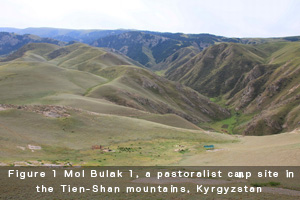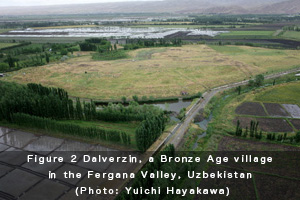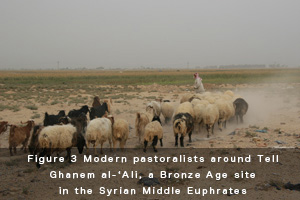Shogo KUME
The main focus of my archaeological research is geographical variability in the emergence and developments of early agricultural and pastoral societies in the Near East and Central Asia during the Neolithic and the Bronze Age. My current field project in the mountains and the adjacent foothills of Kyrgyzstan and Uzbekistan in Central Asia focuses on the study of the formation of social and economic basis of complex nomadic political organization in the Bronze Age, which characterizes the later history of Central Eurasia represented by nomadic states and empires, from the viewpoints of adaptation to the environment, cultural transmissions, and human interactions.
My previous field research from 2008 to 2011 at Bronze Age burial sites in the steppe of the Syrian Middle Euphrates, which is closely associated with the research questions of this project, has attempted to illustrate the dynamics of materialized tribal and ancestral ideologies from mortuary evidence.
In this project, I attempt to develop a deeper understanding on archaeology of pastoral societies in different environments of interior deserts in Jordan and Saudi Arabia, considering diverse developments of food producing societies that emerged in various parts of Eurasia since the Neolithic.
Selected publications
・Kume, S., Y. Miyata and S. Kadowaki (2017) “Feasting with the dead on the Euphrates: Stable isotope analysis of carbonized residues on Early Bronze Age ceramics from the cemetery near Tell Ghanem al-‘Ali.” Al-Rafidan 38 (Special Volume: Papers in honor of Professor Katsuhiko Ohnuma on the occasion of his 70th birthday): 95-100.
・Kume, S. and A. Sultan (2014) “Burials, nomads, and cities: A perspective to changing nomad-sedentary relations on the Syrian Middle Euphrates during the third and second millennium BC.” In: D. Morandi Bonacossi (ed.), Settlement Dynamics and Human-Landscape Interaction in the Dry Steppes of Syria. pp. 137-150. Wiesbaden: Harrassowitz Verlag.
・Kume, S. (2013) “Gypsum plaster manufacturing in northeast Syria: An ethnographic case study.” In: Y. Nishiaki, K. Kashima and M. Verhoeven (eds.), Neolithic archaeology in the Khabur Valley, Upper Mesopotamia and beyond. pp.80-95. Berlin: ex oriente.
・Numoto, H. and S. Kume (2010) “Survey and sondage at the cemeteries near the site of Tell Ghanem al-’Ali.” In K. Ohnuma et al. (eds.), Al-Rafidan special issue. Formation of tribal communities: Integrated research in the Middle Euphrates, Syria. pp. 49-60. Tokyo: The Institute for Cultural Studies of Ancient Iraq, Kokushikan University.











